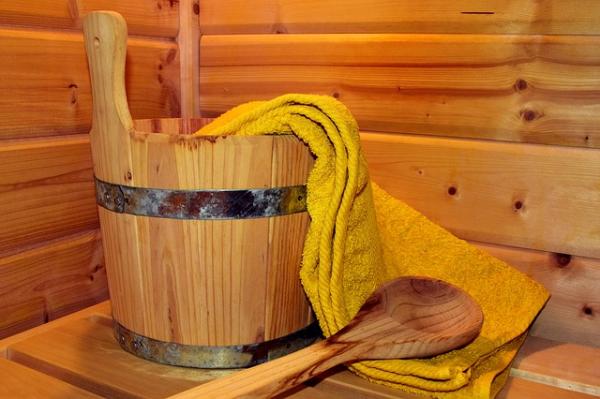The Finnish people live a bit longer than those of us in the United States. While the reasons are multifactorial, a study in the Journal of Human Hypertension [1] wants to give some credit to the cardiovascular benefits of – the sauna. No pills to remember or special dietary injunctions, just a 30-minute time-out in the sauna.
The authors looked at 100 individuals without a history of cardiovascular symptoms who had at least one risk factor, hypertension, obesity, smoking, cholesterol problems or a family history of coronary artery disease. Elevated cholesterol and family history were the primary risk factors, and they were generally a well 50-year-old. Each underwent a sauna treatment at 73 C (163 F) for 30 minutes interspersed with a 2-minute warm shower with a variety of physiologic measurements made before, immediately after and 30 minutes after ‘treatment.’ Based on a pre-treatment questionnaire, these subjects were not sauna naïve, using a home version one to four times weekly.
- Mean body temperature increased 2 C during treatment, returning to baseline at 30 minutes.
- Systolic blood pressure dropped by 7 mm (4.13%) and remained lower at 30 minutes
- Diastolic blood pressure decreased by 7 mm (8.7%) and remained lower at 30 minutes
- Heart rate increased and returned to baseline at 30 minutes.
- Arterial stiffness [2] decreased during sauna treatment trending back to baseline values at 30 minutes.
- Hemoglobin, white blood cells and platelets all rose during sauna, with the white blood cells remaining elevated at 30 minutes. The authors posited dehydration and subsequent rehydration would account for these findings.
None of these are surprising findings. Elevated temperature results in vasodilation, the blood vessels widen to increase flow and allow the excess heat to be radiated away. The primary measure of vascular tone, how constricted or dilated the vessels, is the diastolic blood pressure. (By the way, here is a fun fact: we spent 2/3rds of the cardiac cycle in diastole, so diastolic blood pressure is a more consistent expression of the degree of our hypertension.) The decreases in diastolic blood pressure measure the vasodilation.
Because the vascular space is now expanded from the vasodilation, the systolic blood pressure also is lower. To maintain our oxygenation, we need blood to circulate, and the combination lower systolic and diastolic blood pressure reduce flow. The heart increases the rate of contractions (heart rate) to move more blood through the vascular space at these lower pressures. The arterial stiffness is another way to measure the ability of our vessels to constrict or dilate, measuring the effect in larger vessels rather than in the smaller vessels that are more represented by the change in diastolic blood pressure.
Their findings represent basic physiology. But after all, this is an academic paper, so conjecture is allowed or maybe even required.
“These beneficial effects of sauna bathing on indices of cardiovascular function may underpin the long-term protective effects of sauna bathing on cardiovascular and mortality risk…”
There were no adverse effects, and they were careful to point out that the work was based on “traditional hot and dry Finnish sauna bathing, which is not comparable to saunas operating in lower temperatures and heated water immersion.” [3] And like good scientists, they end with both hope and a call to action,
"Our previous epidemiological study suggests that to reduce CVD risk, frequent sauna sessions at 19 min per single sauna session may be required to have beneficial effects on the cardiovascular system ….. the most beneficial duration of sauna for cardiovascular health has to be defined…”
In the meantime, where is my prescription pad so I can start ordering therapy?
[1] Acute effects of sauna bathing on cardiovascular function Tanjaniina Laukkanen et. al. Journal of Human Hypertension doi:10.1038/s41371-017-0008-z
[2] This term refers to how quickly the blood vessels can constrict or dilate; you can substitute suppleness in place of stiffness. As in yoga, supple is better.
[3] A scientific term for hot tub




